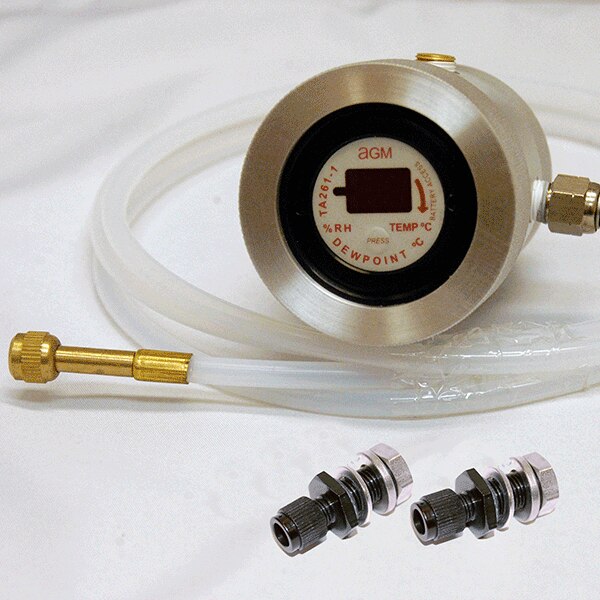Trouble finding a product?
Contact us.
NEPS Two Point Through Purge Kit
AGM’s Through-Purge Kit is a simple 2-point dry gas purging kit for removing unwanted moisture from a sealed container or enclosure.
- Container Access
- Corrosion Prevention
- Humidity Monitoring
- Moisture Control
- Moisture Purging
- Pressure Control
- Shelving & Straps
- Shock Monitoring
Find What You're Looking For
It’s a lot, we know. If you’re looking for something specific or aren’t sure what you need, try searching through all products or give us a shout and we’ll help!

Benefits Of 2-Point Gas Purging Units
As a dry, inert gas, nitrogen displaces oxygen and the moisture it contains. Purging an enclosure with nitrogen essentially replaces the internal atmosphere with a dry atmosphere.
Industry Applications
In the early years of air separation, oxygen was the most sought-after component for use in the steel industry. This situation began to change when nitrogen was no longer considered a waste product and its inert properties could be exploited as a blanketing gas. Dry nitrogen can be supplied from bottles, cryogenic factories or nitrogen generators.
Today, nitrogen is used in a host of applications, including:
- Blanketing of tanks with flammable or toxic materials
- Blanketing of metal reduction processes
- Purging process equipment
- Medical applications
- Soil freezing prior to excavation
- Food freezing
- Finishing of rubber goods
- Cooling in helium or hydrogen plants
- Freeze grinding
- Fragmentation of scrap metal
- Electronics Industry
Purging and blanketing are probably the most popular uses of nitrogen gas. Tanks filled with hydrocarbon liquids have vapor space at the top of the tank, which collects hydrocarbon vapors. In atmospheric tanks, air can be drawn in when emptying the tank and it would be easy to ignite this by static electricity or friction. Purging the vapor space with nitrogen prevents this.
Get The Solution That's Right For You
No two jobs are the same. Work with AGM Engineering and get a solution specific to your challenge today.
FAQs
Nitrogen is generally a reliable dry gas, which is economic, safe (when handled properly) and chemically inert with most metals and materials.
Bottled nitrogen is often specified as dryer than 2 ppm (parts per million) equivalent to a dew point of -94°F (-70°C). The gas source for drying should always be validated before use. As a rule of thumb the gas must be at least 10°C lower than required purge dryness.
- Molecular Weight: 28.01
- Boiling Point: -319.9°F (-195.5°C ) at 14.7 psi (101.3 kPa)
- Specific Volume: 13.72 ft.3 lbs.-1 (0.855 m3 kg-1 at 68°F (20°C), 14.7 psi (101.3 kPa)
- Critical Temperature: -232.5°F (-146.95°C)
- Critical Pressure: 493 psi (3,400 kPa)
- Heat Capacity: 249 BTU lbs.-1 °F-1 (1,040 Jkg-1 K-1) at 77°F (25°C), 14.7 psi (101.3 kPa)
- 60 Minutes to degrade by 0.01 psi
- 1,000 cc volume = 1.9 x 10-4 cc/second
- 10,000 cc volume = 1.9 cc x 10-3 cc/second
CAUTION: Leak testing must be conducted with a stable/constant ambient/equipment temperature. A variation of 3.6°F (2°C) can cause up to a 0.1 psi change in pressure.
Yes. It is available in a 19″ rack-mounted version, NEPS 1900 Racked, for use in automated test situations.
The NEPS 1000 comes standard with male and female quick disconnect. The female will need to be adapted to your nitrogen line and has a 1/4″ NPT female thread to connect to.
No. The NEPS 1000 can be used with nitrogen, dry air, argon, and sf6 gasses. It should be noted that dry gasses are available in varying qualities and levels of dryness. (no flammable gasses should be used)
The NEPS will display a dew point range of +20°C (+68°F) to -80°C (-112°F).
No. After initial setup, the NEPS 1000 will automatically stop the dry gas cycling when the air stream leaving the equipment reaches a preset dew point temperature. With the addition of a remote sensor, the dew point stat feature of the NEPS 1000 will then resume dry gas cycling after the dew point temperature has degraded to a predetermined amount.
Yes. After repeated cycles, it will become apparent when the moisture has been removed from the hygroscopic materials in the equipment. It is a common misconception that the majority of the moisture in sealed equipment is contained in the empty volume of air. In fact, the majority of the moisture is contained in hygroscopic materials, such as electrical boards and plastic components.
Yes. You can lease a NEPS unit so you can test it for your specific applications, contact us for more information.
Find What You're Looking For
It’s a lot, we know. If you’re looking for something specific or aren’t sure what you need, try searching through all products or give us a shout and we’ll help!